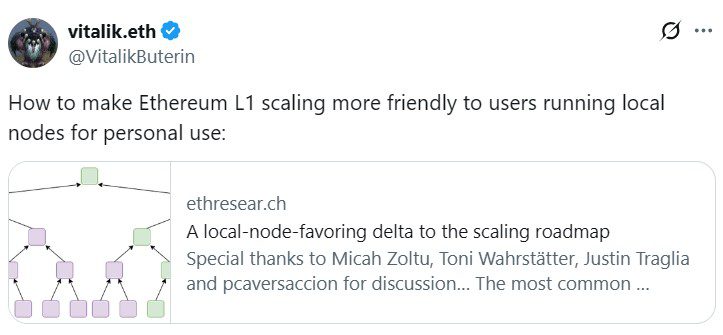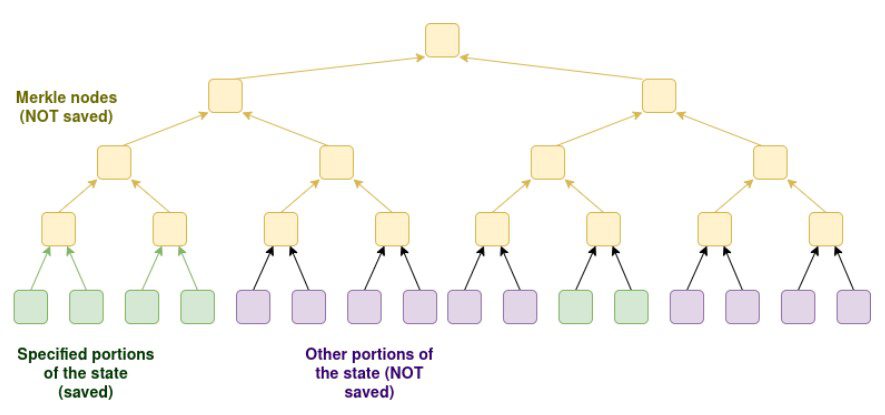Ethereum co-founder Vitalik Buterin has proposed a novel solution to address critical challenges in Ethereum’s scaling and censorship resistance: partially stateless nodes. This proposal aims to make running Ethereum nodes more accessible to individual users, reducing reliance on centralized Remote Procedure Call (RPC) providers and bolstering the network’s decentralization.
The Problem: Centralized RPCs and Scaling Limitations
Currently, many users interact with the Ethereum blockchain through RPC providers. These providers act as intermediaries, allowing wallets, applications, and users to access blockchain data without running their own full nodes. However, Buterin argues that relying on a small number of RPC providers introduces several risks:
- Censorship: Centralized RPC providers are susceptible to pressure to deplatform or censor users.
- Privacy Concerns: Users’ interactions are routed through these providers, raising privacy concerns.
- Scaling Costs: As Ethereum scales and the gas limit increases, running a full node demands more storage and bandwidth, making it harder for individual users to participate.
Buterin’s solution addresses these challenges directly.
The Solution: Partially Stateless Nodes
The core of Buterin’s proposal lies in the concept of partially stateless nodes. These nodes are designed to allow users to verify the blockchain and serve local data while only storing a subset of the Ethereum state, tailored to their specific needs.

How Partially Stateless Nodes Work:
- Selective Data Storage: Users can configure their nodes to store only the data relevant to their accounts, frequently used DeFi applications, and tokens like stablecoins and Ether (ETH).
- Stateless Block Validation: The nodes validate blocks ‘statelessly,’ meaning they don’t require storing the full Merkle proofs or the entire blockchain history.
- RPC Fallback: Queries for data outside the stored subset can be routed through an RPC solution, ensuring access to the full blockchain state.
Benefits of Partially Stateless Nodes
The implementation of partially stateless nodes offers numerous potential advantages for the Ethereum ecosystem:
- Reduced Resource Requirements: By storing only a subset of the state, these nodes significantly reduce the storage and bandwidth requirements compared to full nodes.
- Enhanced User Privacy: Users have greater control over their data and can minimize their reliance on centralized RPC providers, improving privacy.
- Improved Censorship Resistance: A more decentralized network with more individual node operators is inherently more resistant to censorship.
- Increased Accessibility: Making it easier for users to run their own nodes promotes greater participation in the Ethereum network.
Implications for Ethereum’s Future
Buterin’s proposal represents a significant step towards a more scalable, decentralized, and user-friendly Ethereum ecosystem. By empowering users to run their own nodes with reduced resource requirements, partially stateless nodes could foster greater trust, privacy, and censorship resistance within the network.
Technical Details and Considerations
Implementing partially stateless nodes involves complex technical challenges, including:
- Efficient Data Retrieval: Optimizing the process for retrieving data from RPC providers when the required information is not stored locally.
- Security Considerations: Ensuring the security of partially stateless nodes and preventing malicious actors from exploiting vulnerabilities.
- State Management: Developing robust mechanisms for managing and updating the subset of the Ethereum state stored by each node.
Despite these challenges, the potential benefits of partially stateless nodes make them a promising area of research and development for the Ethereum community.

In conclusion, Vitalik Buterin’s proposal for partially stateless nodes offers a compelling vision for the future of Ethereum, one where scalability, decentralization, and user empowerment are prioritized. While further research and development are needed, this innovative approach holds the potential to reshape the Ethereum landscape and pave the way for a more robust and accessible blockchain ecosystem.